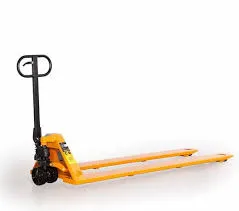


Understanding Lever Block Pricing An In-Depth Analysis
Lever blocks, also known as lever hoists or block and tackle systems, are essential tools in various industries, including construction, manufacturing, and shipping. These devices provide mechanical advantage, allowing users to lift heavy loads with minimal effort. However, one of the critical factors that businesses must consider when investing in lever blocks is pricing. This article delves into the factors influencing lever block pricing and offers insights for businesses looking to make informed purchasing decisions.
Factors Influencing Lever Block Pricing
1. Capacity and Specifications The price of a lever block is significantly influenced by its lifting capacity. Higher capacity models, capable of lifting several tons, will generally be more expensive than smaller models designed for lighter loads. Additionally, specifications such as the material used (steel vs. aluminum), the quality of the mechanisms, and safety features can also impact the pricing structure.
2. Brand Reputation The manufacturer’s reputation plays a crucial role in pricing. Well-known brands that are recognized for their durability and reliability often charge higher prices than lesser-known brands. Companies may be willing to pay a premium for trusted brands to ensure that they receive a high-quality product that will withstand the rigors of daily use.
3. Market Demand and Supply Like many products, lever block prices can fluctuate based on market demand and supply dynamics. For example, during construction booms or periods of high maritime activity, demand for lever blocks may rise, leading to price increases. Conversely, if supply outpaces demand, prices may drop. Understanding these market trends can assist businesses in timing their purchases strategically to secure the best prices.
4. Technological Advancements The introduction of new technologies can affect lever block pricing. Advanced features, such as automatic braking systems, improved gear mechanisms, and enhanced safety measures, can elevate costs. As manufacturers innovate and improve their products, those advancements often come at a premium. However, investing in technologically advanced lever blocks can improve safety and efficiency, justifying the higher initial cost.
5. Regulations and Standards Compliance with safety regulations and industry standards is another factor affecting pricing. Lever blocks designed to meet specific safety certifications may cost more due to the materials and testing involved in ensuring compliance. Businesses operating in industries with strict safety regulations may find it worthwhile to invest in certified equipment, even if it means a higher upfront expense.
6. Volume Purchases Many suppliers and manufacturers offer discounts for bulk purchases. Companies that are planning extensive projects or have ongoing lifting needs can take advantage of these bulk pricing strategies to reduce overall costs. Negotiating prices based on expected quantities can lead to significant savings.

Making Informed Purchasing Decisions
When considering lever block purchases, businesses should conduct thorough research to identify the best options for their specific needs. Here are a few recommendations
- Compare Products Collect information on various brands, models, and their respective prices. Understanding the differences in specifications can help in assessing value for money.
- Assess Long-Term Costs Sometimes a higher initial price can lead to lower long-term costs if the product proves to be more durable and reliable, reducing frequency of replacements and maintenance.
- Consult with Experts Engaging with industry professionals can provide valuable insights into which products perform best in specific applications, helping businesses make informed decisions.
- Evaluate Warranty and Support Consider the warranty and customer support provided by the manufacturer. A comprehensive warranty can mitigate some of the financial risks associated with equipment failure.
Conclusion
In summary, understanding lever block pricing requires a multifaceted approach that considers capacity, brand reputation, market dynamics, technological advancements, compliance with regulations, and buying strategies. By taking these factors into account and conducting thorough research, businesses can make informed purchasing decisions that enhance their operations while staying within budget. Investing in the right lever block not only contributes to operational efficiency but also improves safety and productivity in the workplace.



